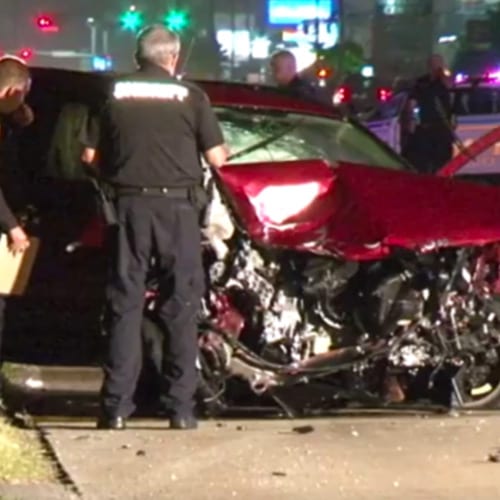Brain Injury and Personal Injury Fact Sheet for 2021
Apr 29, 2021
Traumatic Brain Injury Definition:
Traumatic brain injury, also known as TBI, occurs when the brain experiences a sudden trauma. This damage can result from violent contact with an object, whether or not the object pierces through the skull into the brain tissue.
TBI is a nationwide problem. Key findings from a 2014 report by the Centers for Disease Control report that 2.88 Million Traumatic Brain Injuries required emergency care, hospitalization or resulted in death. The CDC refers to these serious instances of TBI as Emergency Department Visits, Hospitalizations, and Deaths as EDHDs.
Most recent data from 2014 about Traumatic Brain Injury from the Centers for Disease Control and Prevention (CDC) 2014, shows that millions are affected each year from TBI. And that number is likely still growing. The number of total TBI-EDHDs increased by 53% from 2006 (N approximately 1.88 million) to 2014 (N approximately 2.88 million).
Annually, estimates show that all of the incidents of TBI across the nation combined cost approximately $82 billion in medical bills and indirect costs, such as loss of productivity. In many cases, such as car crashes, these burdens are preventable.

Traumatic Brain Injury Infographic and Facts
You may want to know how often TBI occurs or statistics about how common a TBI is from slip and fall incident. Dealing with a brain injury can be a stressful process, so whether you are curious about brain injuries or are researching for a loved one, you may want to know more about traumatic brain injuries.
What are the Leading Causes of TBI?
The leading cause of TBI is falls, trips, and slips. Going on the These leading causes are according to the most recent data provided by the Center for Disease Control, as an average between 2006 – 2010. All data reported is nationally recorded by the CDC.
- Falls, Trips and Slips – 40.5% of all Traumatic Brain injuries were caused by falls for all age groups. falls disproportionately affect the youngest and oldest age groups. The CDC reports that more than half (55%) of TBIs among children 0 to 14 years were caused by falls. Among adults aged 65 and older, more than 80% of TBIs are caused by falls.
- Unknown – 19% of traumatic brain injuries reported did not report a cause of the injury.
- Struck by / Against – 15.5% of TBI’s are caused by blunt force. When a person’s head strikes or is hit by another object it is considered a “struck by or against” injury. This category is an injury that may result from being hit by another person, but the strike was unintentional. Another phrase that could be used is unintentional blunt trauma. The CDC reports that almost a quarter of all TBIs in children less than 15 years of age were considered struck by / against.
- Motor Vehicle Accident – Motor vehicle accidents, including truck accidents, car accident, pedestrian accident, and more make up 14% of the cause of TBI, motor vehicle crashes and accidents are the third leading cause of TBI in the U.S.
- Physical Assault – A little over 10% of all TBIs are caused by Assault. 75% of assault related injuries occur in persons 15-44 years of age.
Did you know? TBI is the leading cause of death among the 15-24 year age group.
Find out more about child injuries.
Types of Brain Injury
The Brain Injury Association of America provides complete and thorough information about all forms of brain injury. Acquired brain injuries are considered non-traumatic, and are not included on this list. They may be caused by stroke, tumor, or neurotoxins. Traumatic brain injury is generally caused by a physical force to the head.
- Diffuse Anoxal Injury May be caused by a car accident or other rotational force.
- Concussion: The most common type of TBI. Caused by direct blow, may lose consciousness or just feel “dazed.”
- Contusion: It is a bruise (bleeding) on the brain. May need to be surgically removed.
- Coup-contre Coup Injury: A contusion that occurs at the site of impact and at the opposite side of the brain.
- Locked in Syndrome: Rare. A condition in which a person can only move their eyes.
- Shaken Baby Syndrome: This violent crime occurs when a perpetrator aggressively shakes a baby or a young child.
How Common is Traumatic Brain Injury?
Every year, at least 1.4 Million Americans experience a TBI. Of those, about 4% die. Right now, there are 5.3 million Americans alive with long term TBI related disability.
A recent study published by The Journal of the American Osteopathic Association says symptoms like headaches can linger much longer in girls.
Recovery time for could last as long as 28 days, and in boys as long 11 days. Many of the injuries to girls occurred in sports such as volleyball, soccer, cheerleading and softball.
- 1.4 Million Americans Experience a TBI
- 1.1 Million of those are treated in the emergency for a TBI or a TBI and other injury.
- 235,000 are hospitalized each year due to a Traumatic Brain Injury.
- 50,000 die each year due to traumatic brain injury.
Symptoms of TBI: Short and Long Term Affects
Scientists are still working to gain a better understanding of brain injuries and how they can affect a person’s cognitive abilities. Research was recently released in 2021 showing an increased risk of dementia 25 years after a single traumatic brain injury. The risk of dementia increases as the number of head injuries sustained by an individual increases.
Findings such as these can help doctors treating personal injury patients receive the top medical care. A better understanding of the risks can give patients and their physicians tools to plan for the future. The following symptoms, as well as imaging (performed by a radiologist) can help doctors diagnose and treat TBI.
How Can I tell If I’m Experiencing a Traumatic Brain Injury?
The symptoms of TBI vary widely, depending on the degree of severity of the injury. They include headache, confusion, blurred vision, dizziness, lightheadedness, ringing in the ears, fatigue, memory loss, and trouble with concentrating or paying attention. TBI may also manifest itself through the more serious symptoms of nausea, vomiting, convulsions, slurred speech, and loss of coordination.
Symptoms of Mild Traumatic Brain Injury
- Loss of consciousness for a few seconds or minutes
- A confused and disoriented state
- Headache
- Problems with memory
- Nausea
- Mood swings and changes
- Fatigue
- Feelings of anxiety and depression
Symptoms of a Severe Traumatic Brain Injury
- Loss of consciousness for several minutes or several hours
- Slurred speech
- Deep confusion
- Loss of coordination
- Persistent headache that may worsen over time
- Repeated vomiting
- Convulsions or seizures
- Clear fluids draining from the nose or ears
- Agitation, aggressiveness and other uncharacteristic behaviors
The victim of a more severe head injury will exhibit many of the same symptoms as a mild traumatic brain injury, but may have a harder time recovering due to more severe symptoms like those listed below, or a longer recovery period.
The faster a traumatic brain injury is diagnosed, monitored and treated, the more likely you’ll have a successful recovery. If you or someone you love experiences any of these symptoms after a head injury, got to the hospital immediately.
Are TBI and CTE the same?
In short, no. Chronic traumatic encephalopathy (CTE) is a term used to describe brain degeneration caused by repeated head traumas. CTE is much less common, and in fact quite rare compared to TBI. However, symptoms of CTE and TBI may look very similar, as CTE may lead to cognitive impairment, depression, memory loss, emotional instability, and other symptoms. CTE may occur over repeated exposure to head injury, while TBI may develop from one instance. It is important for all who experience head injury to seek attention of a licensed medical professional immediately.
Austin Brain Injury Accident Lawyers
McMinn Law Firm Attorneys Are Experienced in Brain Injury Cases
If you or a loved one has suffered a brain injury because of someone else’s negligence, you need an aggressive personal injury attorney. Jason McMinn and Justin McMinn are determined to protect those harmed by the hazards of the roads.
Contact the McMinn Law Firm today for a free consultation by phone at (512) 474-0222, filling out a case evaluation form, or emailing us at info@mcminnlaw.com.
See More:
Austin: Local Resources for Those who Suffer a Traumatic Brain Injury
- Mary Lee Foundation: Outpatient Neurological Services. The Mary Lee Foundation, a 501(c)(3) nonprofit in Austin offers an outpatient program for patients diagnosed with a traumatic brain injury. The program is designed to assist clients with reaching their highest level of independence. Learn more about this program provided by the Mary Lee Foundation in Austin.
- Small Victories Foundation was founded in central Texas in 2014 to promote physical and emotional healing for adult survivors of brain injuries. The organization works by connecting TBI survivors with arts experiences through professional instruction and performance/sharing opportunities. Learn more about this Austin 501(c)(3).
Fast Free Case Evaluation
Recent Personal Injury Case Results
The McMinn Law Firm has helped injured Austinites for fifteen years, winning over 100 million dollars in settlements to date.
Uninsured Motorist Accident
$350,000
Drunk Driver Accident
$1,300,000
Truck Accident Victim
$1,200,000
Austin Personal Injury Lawyers Waiting To Help You
We specialise representing clients in the following areas, we are waiting to help you on your personal injury case.








Our Awards



What Past Clients Are Saying
In Need Of Compensation?
Let us – at no cost to you – evaluate your situation so you can be sure. We don’t get paid unless you do. Call or reach out today to speak to an attorney with no obligations.
